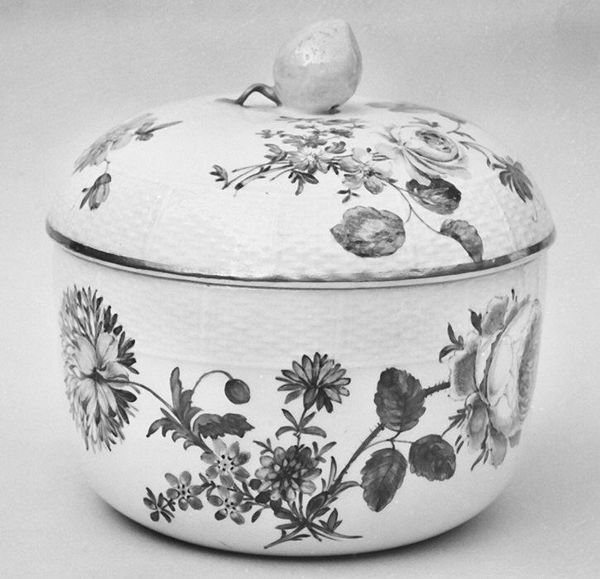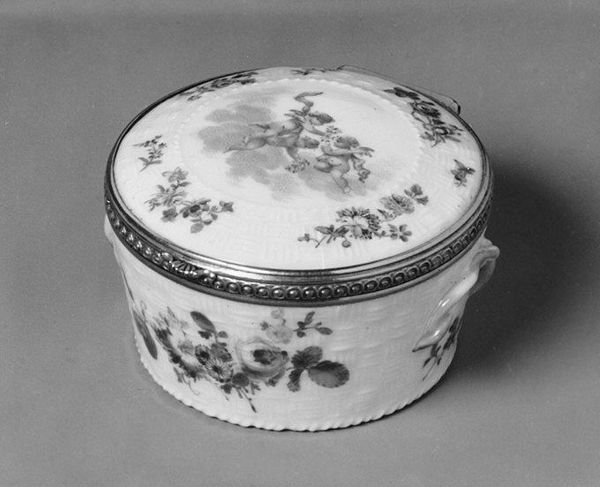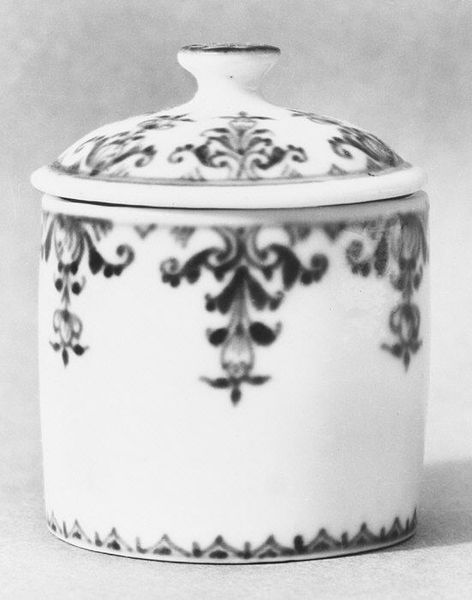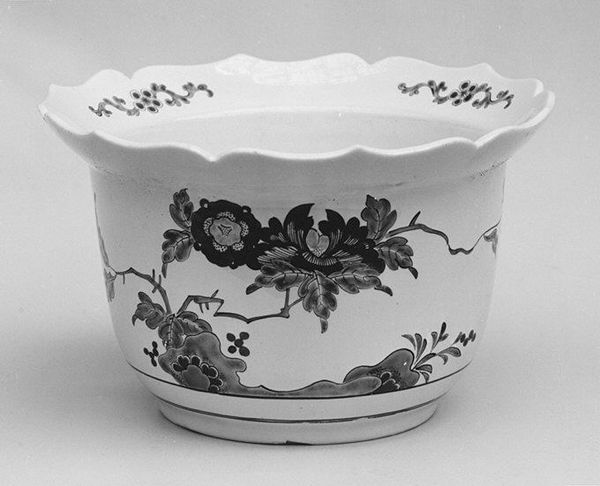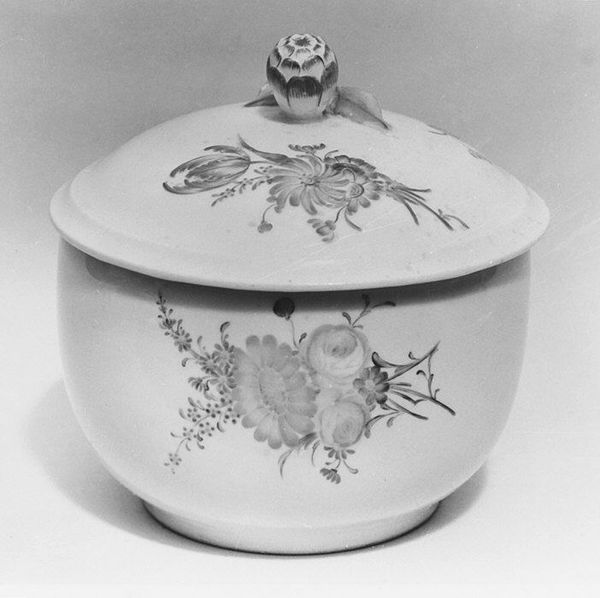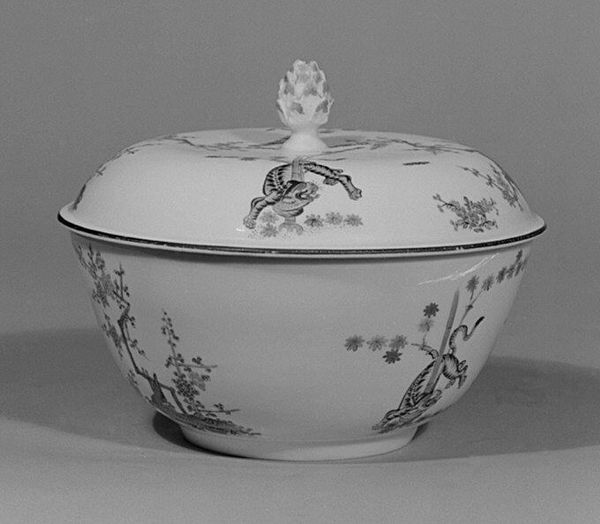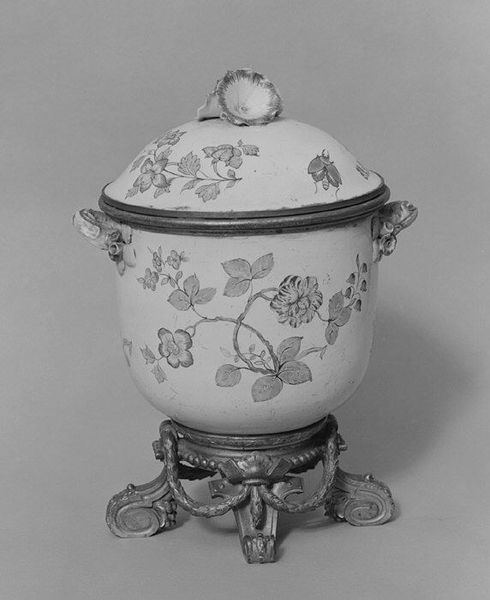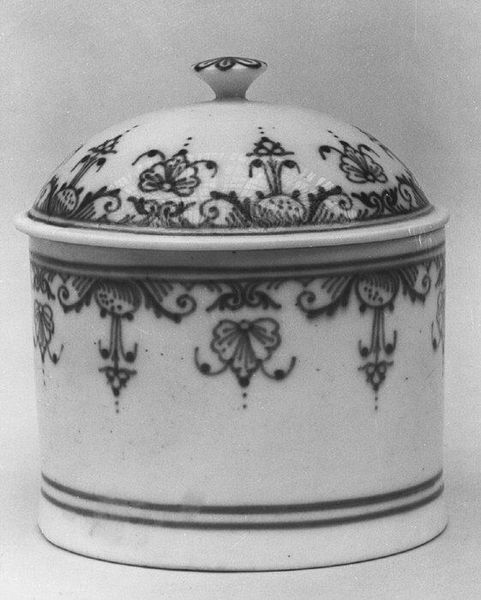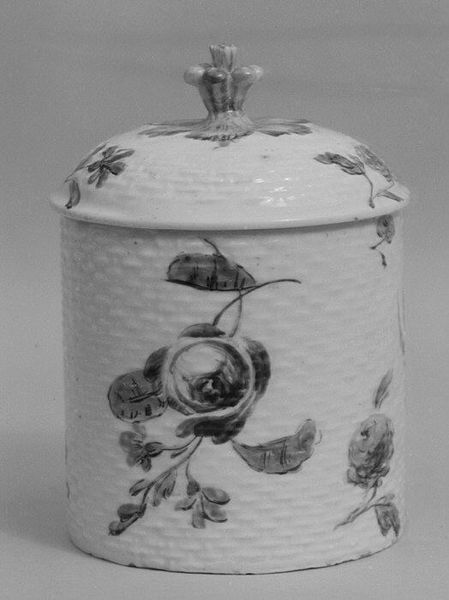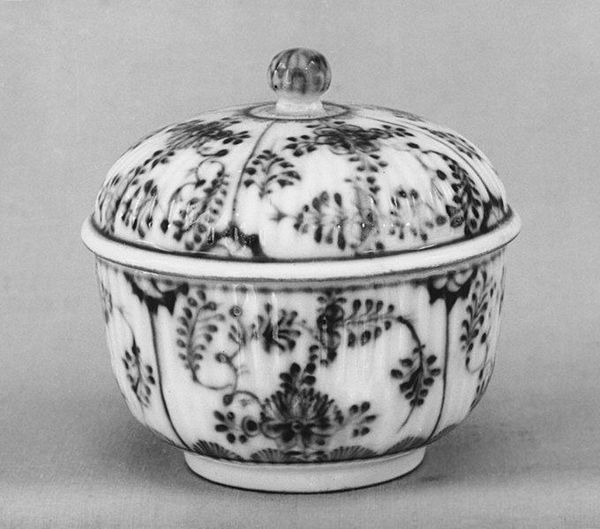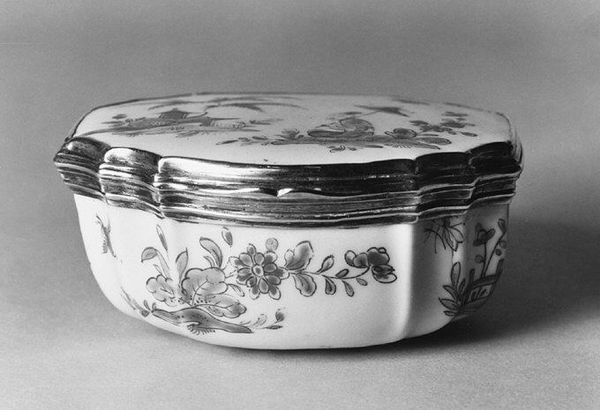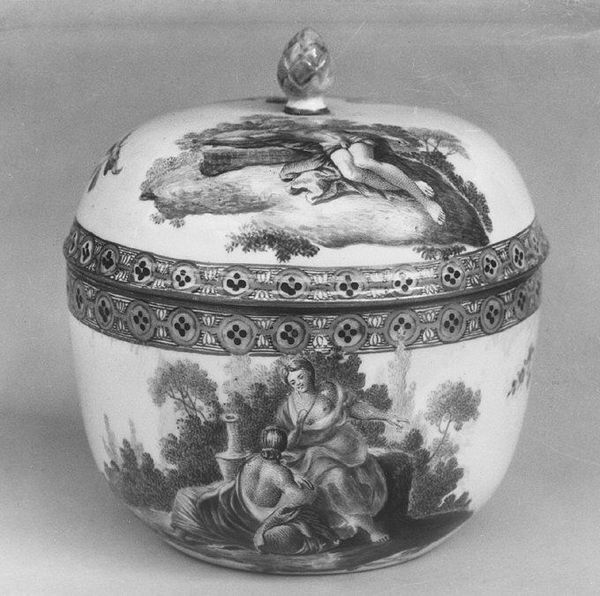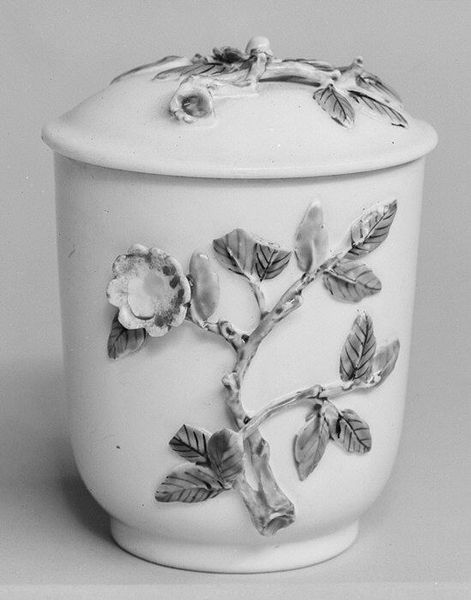
Dimensions: Height: 3 3/8 in. (8.6 cm)
Copyright: Public Domain
Editor: We’re looking at a ceramic piece titled "Bowl with cover," crafted between 1785 and 1799. It's porcelain and currently held at The Met. I’m struck by how the painted decoration and shape are perfectly unified. What catches your eye in terms of the bowl’s form? Curator: Formally, this object exemplifies the Rococo sensibility. Consider the gentle curve of the lid echoing the broader cylindrical form. Then notice how the sharp handle creates a counterpoint to the rounded base, resulting in balanced asymmetry. The eye follows these lines; can you see how that shapes the overall effect? Editor: Yes, I see that contrast now. I'm wondering, would you consider the painted elements as being similarly vital to its composition, as is the container itself? Curator: Indeed. Observe how the painted garland is deliberately positioned to complement and emphasize the bowl's curvature. It’s not mere surface decoration but an integrated design element. The monochrome palette further highlights form over mere chromatic display. Ask yourself, what is the relation between the applied decoration, and the overall form? Editor: I see it now; the decorations aren’t just ‘added on,’ but integrated to further emphasize shape. That gives the bowl such harmony. Thank you! Curator: Of course. By attending to these formal qualities, we achieve a deeper understanding of the artistic intention that generated this object. It’s a delicate dance between function and aesthetics.
Comments
No comments
Be the first to comment and join the conversation on the ultimate creative platform.
